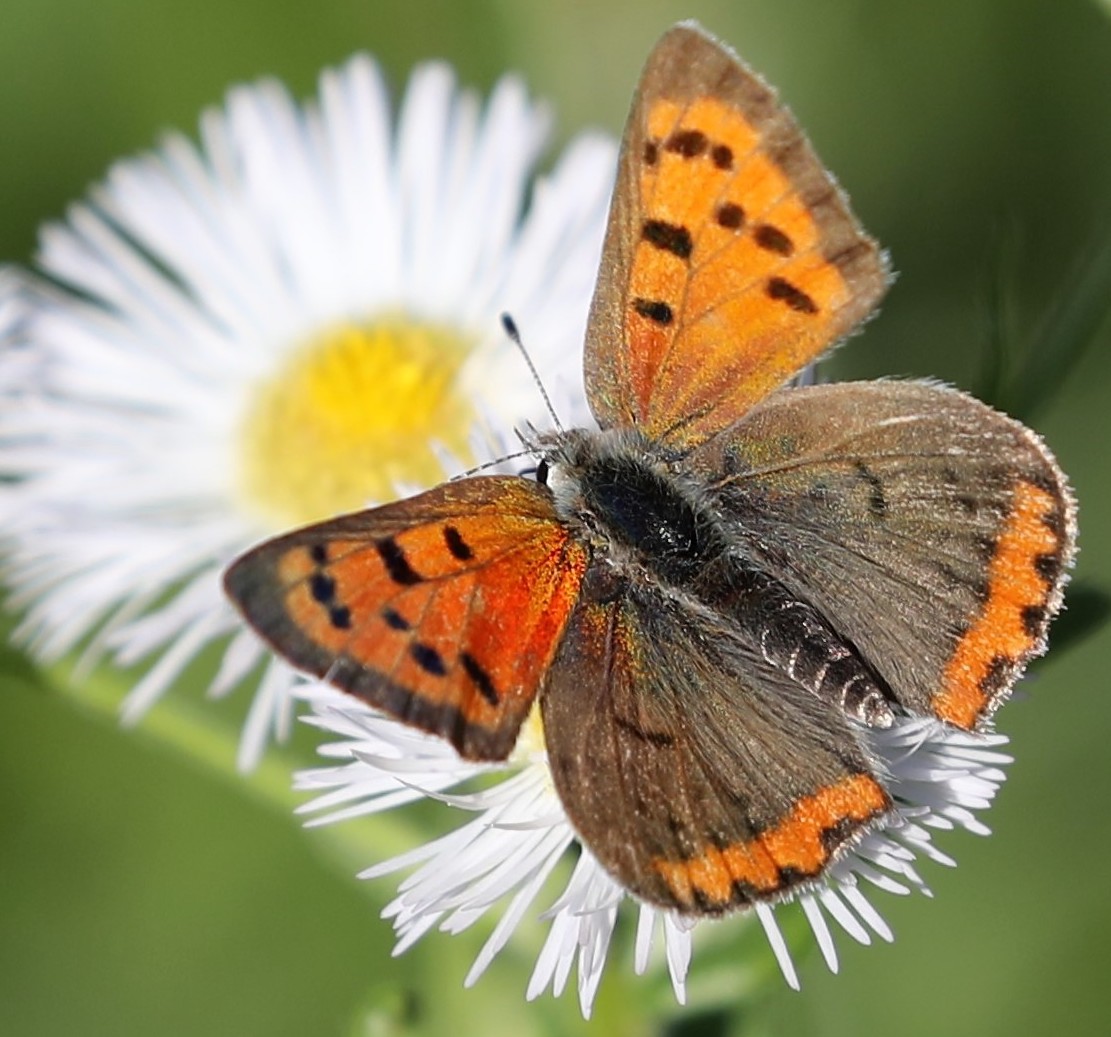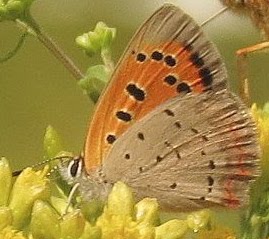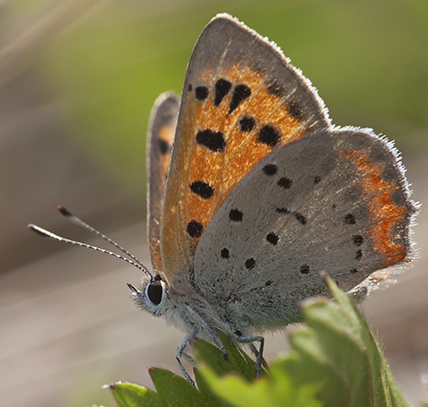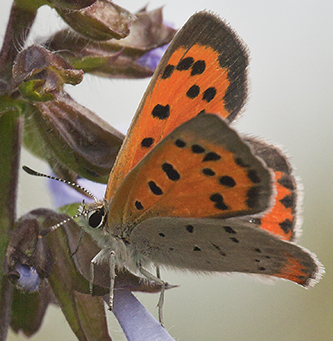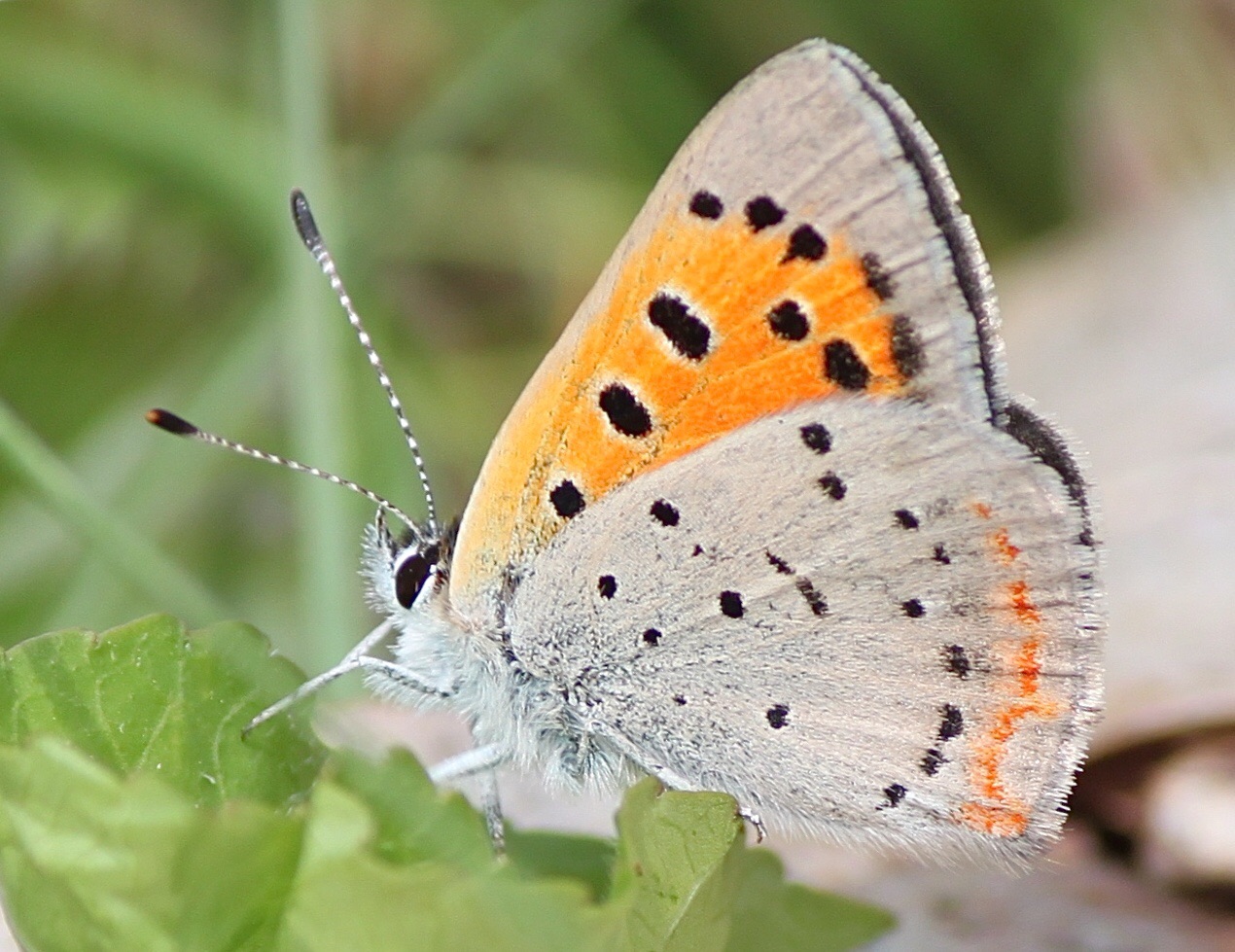|
| Common Name | American Copper by Ted Wilcox => 07/01/05 ? Ashe County, NC
[View PDF]
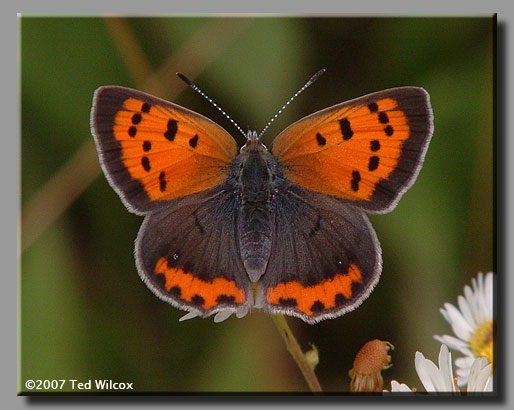 Click to enlarge Click to enlarge
[Google Images] GBIF [Global Distribution ] BoA [Images ] iNaturalist |
| Scientific Name | Lycaena hypophlaeas
|
| Link to BAMONA species account. |
| Map | Click on a county for list of all database records for the species in that county.
 |
| Distribution | DISTRIBUTION: Essentially throughout of the Mountains, but quite scattered in the Piedmont and in the Sandhills portion of the upper Coastal Plain. Apparently absent in most places in the Piedmont and Coastal Plain, though it has been recorded along the SC coast.
|
| Abundance | ABUNDANCE: Decreasing in numbers in the past few years. Formerly, fairly common to locally common in the northern Mountains, but mostly uncommon to fairly common now; rare to uncommon in the central Mountains, and generally rare in the southern Mountains. Formerly rare and local in the Sandhills, but very few recent records, and seemingly very rare there now. Extremely rare (only 22 records) in the Piedmont. NC lies near the southeastern edge of the range.
|
| Flight | FLIGHT PERIOD: At least three broods in NC. The Coastal Plain and Piedmont records range from mid-March to late October; the flight periods are not overly obvious from the flight charts, though a minimum of three broods seems apparent downstate (and perhaps four broods in the Sandhills). In the Mountains, broods are from mid-April into late June, late June to mid-August, and mid-August to mid-October.
|
| Habitat | HABITAT: Disturbed habitats, such as vacant lots, mountain meadows, fields, powerline clearings, etc. Usually not seen near woody vegetation (shrubby fields, woodland borders). Most frequently seen in rolling mountain meadows, or non-natural grassy balds, especially ones with much Red Clover (Trifolium pratense).
|
| Plants | FOOD AND NECTAR PLANTS: The foodplants are introduced species of sorrel/dock (Rumex), which abound in NC in weedy, abandoned fields and pastures. The adults nectar on many low-growing flowers such as buttercups, clovers, and composites.
|
| Comments | COMMENTS: Some authorities suggest that the eastern United States population is introduced from Europe; however, there are native populations in the western part of the country. This idea is based on the fact that the primary foodplant is a European introduction and that favored habitats are man-made, such as waste lots and weedy fields. Also, Eastern coppers are closer in appearance to European coppers than they are to populations in the northern and western parts of North America. This suggestion that Eastern populations are not native has bothered many butterfliers, who claim that there is no obvious point of introduction from whence the butterflies have spread (the butterflies were apparently common and widespread when the first lepidopterists started collections and observations); and that there are noticeable color differences between these two groups. Also, there are other butterflies that are clearly native that now use mostly alien plants as foodplants (e.g., Common Sootywing, Hayhurst's Scallopwing, Orange Sulphur, Clouded Sulphur). However, the fact that the species has been recorded only from very widely scattered counties away from the mountains is not consistent with populations of a native species, which should show a more continuous distribution without large gaps in the range.
The species is starting to show declines in the state. Perhaps this is not surprising, as so many "meadow/field" species are declining due to habitat loss, possible herbiciding, untimely mowing, and other factors. Records away from the Mountains, as of 2010, have been very few indeed. Thankfully, Rob Van Epps found a first record for heavily worked Mecklenburg County, on April 21, 2019, with an indisputable photo for documentation; and Richard Stickney added a new record (photo) for Yadkin County in the northwestern Piedmont in 2021. Were these two recent Piedmont individuals just strays from the Mountains? Probably not, and there are likely a few tiny outpost breeding sites in this region.
In 2022-23, the North American form of the species was split off into a "new" species, named now as Lycaena hypophlaeas -- following the Pelham (2023) checklist. This somewhat affirms that the North American form has been separated from the European form for thousands if not millions of years.
|
State Rank | S3S4 | | State Status | |
Global Rank | G5 | | Federal Status | |
| Synonym | Lycaena phlaeas
|
| Other Name | Little Copper
|
|
|

 >>
>>